-
 Bitcoin
Bitcoin $76,479.4701
-3.52% -
 Ethereum
Ethereum $1,469.1142
-5.46% -
 Tether USDt
Tether USDt $0.9993
-0.03% -
 XRP
XRP $1.7902
-4.83% -
 BNB
BNB $551.0674
-0.78% -
 USDC
USDC $1.0003
0.02% -
 Solana
Solana $105.4201
-1.56% -
 TRON
TRON $0.2301
0.50% -
 Dogecoin
Dogecoin $0.1423
-4.38% -
 Cardano
Cardano $0.5589
-4.51% -
 UNUS SED LEO
UNUS SED LEO $9.0173
0.56% -
 Toncoin
Toncoin $3.0027
-2.56% -
 Chainlink
Chainlink $10.9146
-4.73% -
 Stellar
Stellar $0.2207
-4.45% -
 Avalanche
Avalanche $16.1527
-4.24% -
 Shiba Inu
Shiba Inu $0.0...01066
-6.81% -
 Sui
Sui $1.9318
-3.99% -
 Hedera
Hedera $0.1462
-4.08% -
 MANTRA
MANTRA $6.2098
-1.18% -
 Dai
Dai $1.0001
0.01% -
 Bitcoin Cash
Bitcoin Cash $268.3547
-2.84% -
 Polkadot
Polkadot $3.3678
-6.32% -
 Litecoin
Litecoin $69.1437
-2.09% -
 Ethena USDe
Ethena USDe $0.9986
-0.03% -
 Bitget Token
Bitget Token $3.9888
-4.59% -
 Hyperliquid
Hyperliquid $11.6557
0.72% -
 Pi
Pi $0.5672
-1.97% -
 Monero
Monero $196.0247
-4.01% -
 OKB
OKB $51.1597
0.14% -
 Uniswap
Uniswap $4.7818
-6.32%
What are the tips for Bitget Futures Trading?
Bitget futures trading requires strategic risk management and market analysis to maximize gains; leverage tools like TradingView and maintain emotional discipline for success.
Apr 07, 2025 at 01:49 am
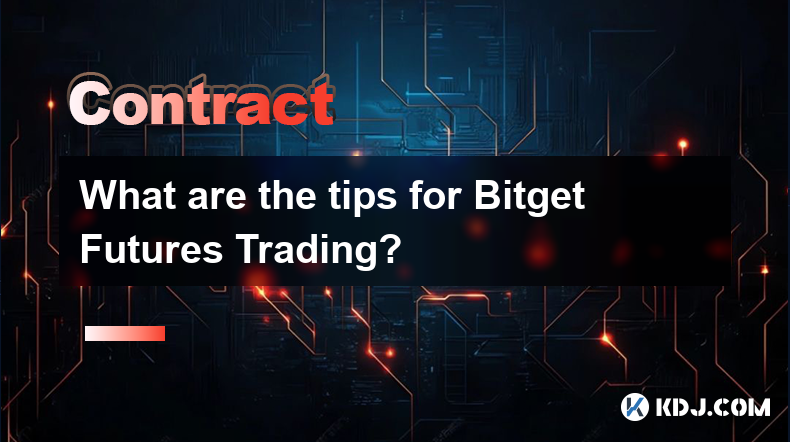
Bitget futures trading can be an exciting and potentially profitable venture, but it requires a strategic approach to manage risks and maximize gains. Whether you're a beginner or an experienced trader, understanding the key tips and strategies can significantly enhance your trading performance. This article delves into essential tips for Bitget futures trading, covering aspects such as market analysis, risk management, and trading psychology.
Understanding Bitget Futures
Bitget futures are derivative contracts that allow traders to speculate on the future price of cryptocurrencies. These contracts can be used to hedge against price fluctuations or to take advantage of market movements. Before diving into trading, it's crucial to understand the mechanics of futures, including leverage, margin, and contract specifications.
- Leverage: Bitget offers various leverage options, allowing traders to amplify their positions. However, higher leverage increases both potential profits and losses.
- Margin: This is the amount of capital required to open and maintain a futures position. Proper margin management is essential to avoid liquidation.
- Contract Specifications: Each futures contract has specific details such as expiration date, size, and settlement method. Understanding these can help in making informed trading decisions.
Conducting Market Analysis
Successful futures trading relies heavily on market analysis. Traders should use both technical and fundamental analysis to make informed decisions.
Technical Analysis
Technical analysis involves studying historical price data and chart patterns to predict future price movements. Key tools include:
- Candlestick Patterns: These can indicate potential reversals or continuations in the market.
- Indicators: Tools like Moving Averages, RSI, and MACD can help identify trends and momentum.
- Support and Resistance Levels: These levels can act as barriers to price movements, helping traders set entry and exit points.
Fundamental Analysis
Fundamental analysis focuses on the underlying factors that affect cryptocurrency prices, such as:
- Market News: Staying updated with the latest news and events can provide insights into potential market movements.
- Economic Indicators: Factors like inflation rates, interest rates, and economic policies can influence cryptocurrency prices.
- Project Developments: Updates on blockchain projects, partnerships, and technological advancements can impact the value of specific cryptocurrencies.
Risk Management Strategies
Effective risk management is crucial in futures trading to protect your capital and ensure long-term success. Here are some key strategies:
- Position Sizing: Determine the size of your positions based on your risk tolerance and account balance. Avoid risking more than a small percentage of your capital on a single trade.
- Stop-Loss Orders: Use stop-loss orders to limit potential losses. Set these orders at levels that align with your risk management plan.
- Diversification: Spread your investments across different assets to reduce the impact of a single trade going wrong.
- Leverage Management: Use leverage cautiously. Higher leverage can lead to significant losses if the market moves against your position.
Developing a Trading Plan
A well-defined trading plan is essential for consistent performance in futures trading. Your plan should include:
- Entry and Exit Criteria: Define clear rules for entering and exiting trades based on your market analysis.
- Risk-Reward Ratio: Aim for trades with a favorable risk-reward ratio, where potential profits outweigh potential losses.
- Trading Goals: Set realistic short-term and long-term goals to guide your trading activities.
- Review and Adjustment: Regularly review your trading performance and adjust your plan as needed to improve results.
Mastering Trading Psychology
Trading psychology plays a significant role in futures trading success. Emotional discipline can help you stick to your trading plan and avoid impulsive decisions. Here are some tips to master your trading psychology:
- Emotional Control: Learn to manage emotions like fear and greed, which can lead to irrational trading decisions.
- Patience: Wait for the right opportunities rather than chasing every market move.
- Discipline: Stick to your trading plan and avoid deviating from your strategies based on short-term market fluctuations.
- Continuous Learning: Stay informed about market trends and continuously improve your trading skills.
Utilizing Bitget's Trading Tools
Bitget offers various tools and features that can enhance your futures trading experience. Make sure to leverage these tools to your advantage:
- TradingView Charts: Use these advanced charting tools to perform technical analysis and identify trading opportunities.
- Copy Trading: Follow successful traders and replicate their strategies to learn and potentially profit.
- Bitget Academy: Access educational resources to improve your understanding of futures trading and market dynamics.
- Mobile App: Use the Bitget mobile app to stay connected to the markets and manage your trades on the go.
Monitoring and Adjusting Your Strategy
The cryptocurrency market is highly volatile, and what works today may not work tomorrow. Continuously monitor your trading performance and be ready to adjust your strategy as needed. Here are some tips for effective monitoring and adjustment:
- Performance Review: Regularly review your trading results to identify what's working and what's not.
- Market Conditions: Stay aware of changing market conditions and adjust your strategies accordingly.
- Feedback Loop: Use feedback from your trades to refine your approach and improve your decision-making process.
Common Questions Related to Bitget Futures Trading
What is leverage in Bitget futures trading?
Leverage in Bitget futures trading allows traders to control a larger position with a smaller amount of capital. It amplifies both potential profits and losses. For example, with 10x leverage, a $100 investment can control a $1,000 position. However, if the market moves against you, losses can exceed your initial investment, so it's crucial to use leverage cautiously.
How can I manage risk in Bitget futures trading?
Risk management in Bitget futures trading involves several strategies, including position sizing, using stop-loss orders, diversifying your investments, and managing leverage. By limiting the amount of capital you risk on each trade and setting clear exit points, you can protect your account from significant losses.
What are the key components of a trading plan for Bitget futures?
A trading plan for Bitget futures should include entry and exit criteria, a risk-reward ratio, trading goals, and a process for reviewing and adjusting your strategy. This plan helps you stay disciplined and make informed trading decisions based on your analysis and risk management rules.
How important is trading psychology in Bitget futures trading?
Trading psychology is crucial in Bitget futures trading as it helps you maintain emotional discipline and avoid impulsive decisions. By managing emotions like fear and greed, practicing patience, and sticking to your trading plan, you can improve your overall trading performance and consistency.
What tools does Bitget offer to enhance futures trading?
Bitget offers several tools to enhance futures trading, including TradingView charts for technical analysis, a copy trading feature to follow successful traders, the Bitget Academy for educational resources, and a mobile app for managing trades on the go. Utilizing these tools can help you make more informed trading decisions and improve your trading experience.
Disclaimer:info@kdj.com
The information provided is not trading advice. kdj.com does not assume any responsibility for any investments made based on the information provided in this article. Cryptocurrencies are highly volatile and it is highly recommended that you invest with caution after thorough research!
If you believe that the content used on this website infringes your copyright, please contact us immediately (info@kdj.com) and we will delete it promptly.
- "Cardano (ADA) Price Could Dip Below $0.60, Following Previous Market Cycle"
- 2025-04-09 05:10:12
- BONK, the well-known meme coin, has risen over 35% in the last week, attracting meme coin investors in the market. So, what caused this rally?
- 2025-04-09 05:10:12
- Bitcoin (BTC) Investors May Not Exactly Feel It, but BTC Has Been a Relatively Good Bet
- 2025-04-09 05:05:12
- Donald's Bitcoin (DONBTC) Could Turn Early Investors into Multi-Millionaires, Like Shiba Inu (SHIB) and Dogecoin (DOGE) Did
- 2025-04-09 05:05:12
- 6 Upcoming Kraken Listings That Could Be the Next Big Thing in Crypto
- 2025-04-09 05:00:13
- COTI Unveils New Privacy-Focused Blockchain to Reshape Web3 Transactions
- 2025-04-09 05:00:13
Related knowledge
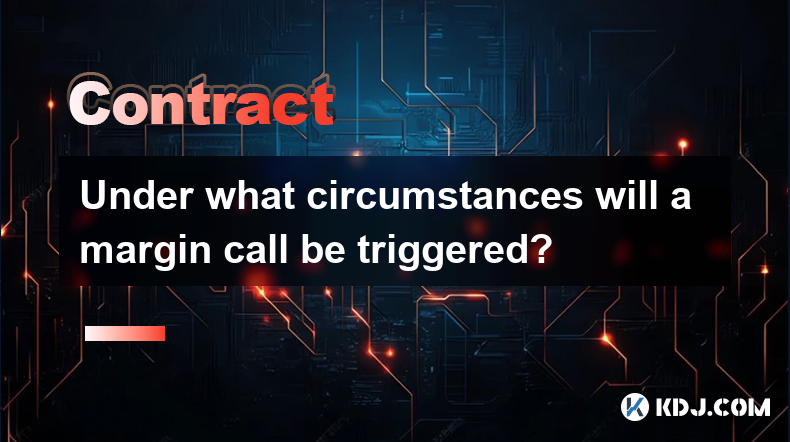
Under what circumstances will a margin call be triggered?
Apr 08,2025 at 02:43pm
Margin trading in the cryptocurrency market allows traders to borrow funds to increase their trading position, potentially amplifying both gains and losses. A critical aspect of margin trading is understanding when a margin call might be triggered, as it can significantly impact your trading strategy and financial health. In this article, we will explor...
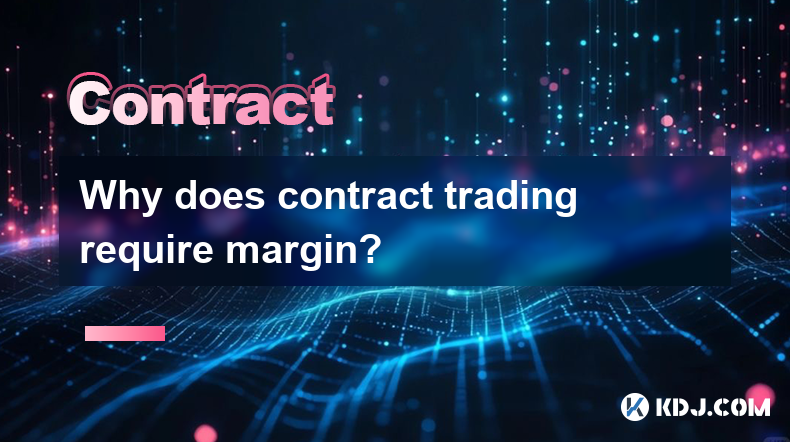
Why does contract trading require margin?
Apr 08,2025 at 02:07pm
Introduction to Contract TradingContract trading in the cryptocurrency market refers to the practice of trading futures or options contracts. These contracts allow traders to speculate on the future price of a cryptocurrency without actually owning the underlying asset. One of the key components of contract trading is the use of margin. Margin is essent...
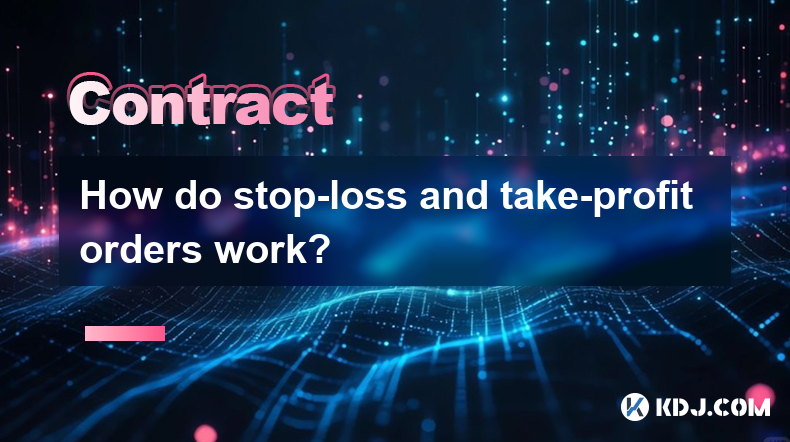
How do stop-loss and take-profit orders work?
Apr 08,2025 at 03:43pm
How do Stop-Loss and Take-Profit Orders Work? In the volatile world of cryptocurrencies, managing risk is crucial for traders. Two essential tools that help in this regard are stop-loss and take-profit orders. These orders are designed to automatically execute trades when certain price levels are reached, helping traders to limit losses and secure profi...
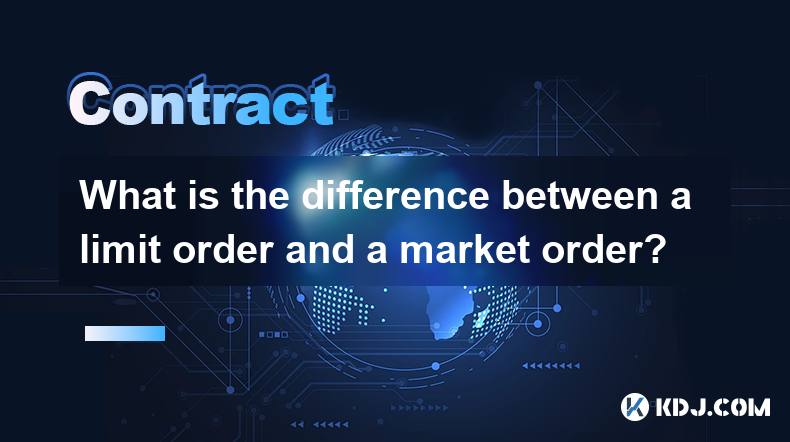
What is the difference between a limit order and a market order?
Apr 08,2025 at 05:14pm
When trading cryptocurrencies, understanding the different types of orders you can place is crucial for effective trading. Two of the most common types of orders are limit orders and market orders. Each serves a different purpose and comes with its own set of advantages and disadvantages. In this article, we will delve into the specifics of both types o...

What is slippage? How can the impact of slippage be reduced?
Apr 09,2025 at 04:21am
Slippage in the context of cryptocurrency trading refers to the difference between the expected price of a trade and the price at which the trade is actually executed. This phenomenon occurs due to the volatility and liquidity of the market, and it can significantly impact the profitability of trades. Understanding slippage and learning how to mitigate ...
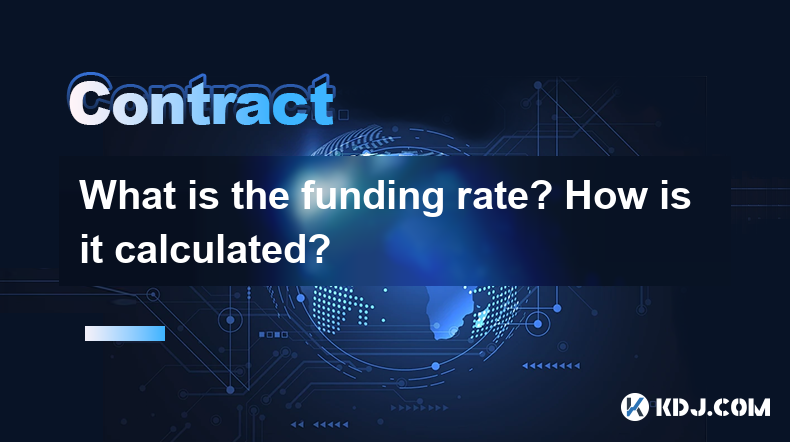
What is the funding rate? How is it calculated?
Apr 08,2025 at 11:35pm
The funding rate is a crucial mechanism in the world of cryptocurrency derivatives, particularly in perpetual futures contracts. It serves as a tool to ensure that the price of a perpetual futures contract remains closely aligned with the spot price of the underlying asset. In this article, we will delve into the concept of the funding rate, its purpose...

Under what circumstances will a margin call be triggered?
Apr 08,2025 at 02:43pm
Margin trading in the cryptocurrency market allows traders to borrow funds to increase their trading position, potentially amplifying both gains and losses. A critical aspect of margin trading is understanding when a margin call might be triggered, as it can significantly impact your trading strategy and financial health. In this article, we will explor...

Why does contract trading require margin?
Apr 08,2025 at 02:07pm
Introduction to Contract TradingContract trading in the cryptocurrency market refers to the practice of trading futures or options contracts. These contracts allow traders to speculate on the future price of a cryptocurrency without actually owning the underlying asset. One of the key components of contract trading is the use of margin. Margin is essent...

How do stop-loss and take-profit orders work?
Apr 08,2025 at 03:43pm
How do Stop-Loss and Take-Profit Orders Work? In the volatile world of cryptocurrencies, managing risk is crucial for traders. Two essential tools that help in this regard are stop-loss and take-profit orders. These orders are designed to automatically execute trades when certain price levels are reached, helping traders to limit losses and secure profi...

What is the difference between a limit order and a market order?
Apr 08,2025 at 05:14pm
When trading cryptocurrencies, understanding the different types of orders you can place is crucial for effective trading. Two of the most common types of orders are limit orders and market orders. Each serves a different purpose and comes with its own set of advantages and disadvantages. In this article, we will delve into the specifics of both types o...

What is slippage? How can the impact of slippage be reduced?
Apr 09,2025 at 04:21am
Slippage in the context of cryptocurrency trading refers to the difference between the expected price of a trade and the price at which the trade is actually executed. This phenomenon occurs due to the volatility and liquidity of the market, and it can significantly impact the profitability of trades. Understanding slippage and learning how to mitigate ...

What is the funding rate? How is it calculated?
Apr 08,2025 at 11:35pm
The funding rate is a crucial mechanism in the world of cryptocurrency derivatives, particularly in perpetual futures contracts. It serves as a tool to ensure that the price of a perpetual futures contract remains closely aligned with the spot price of the underlying asset. In this article, we will delve into the concept of the funding rate, its purpose...
See all articles






















































































